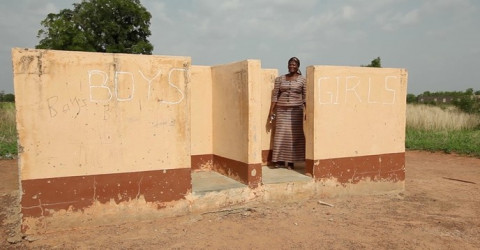
GCED Basic Search Form
Quick Search
Вы здесь
Новости

New data from the UNESCO Institute for Statistics (UIS) reveal serious disparities in the schooling conditions facing children and teachers – from access to electricity, clean drinking water and single sex-toilets to Internet access and computers.
Classroom conditions are key in providing a quality education for all. For children who struggle to enrol in school, for example due to poverty or discrimination on the grounds of gender or disability, poor school conditions can further undermine their chances of a quality education.
What are the new data looking at?
The UIS data reveal serious disparities in primary school conditions that, in turn, shed light on the global learning crisis that affects 617 million – or six out of ten – children and adolescents. The data cited below are for primary schools in 2017 (unless otherwise stated). The areas covered are:
- Electricity
- Internet
- Computers
- Adapted infrastructure and materials for students with disabilities
- Clean drinking water
- Single-sex toilets
- Basic handwashing facilities
How many primary schools have electricity?
Electricity is one of the most basic essentials for any school. Worldwide, an average of 69% of primary schools have power, falling to an average of around 34% for least developed countries. At the regional level, sub-Saharan Africa has the most limited access, at around 35%. Within the region, the lowest levels of access are found in Niger and Sierra Leone, where about 5% and 4% respectively of schools have electricity.
What is the status of internet access in primary schools?
Internet access in primary schools stands at just over 46% (2016) worldwide, falling to about 16% for LDCs, in stark contrast to the average for Northern America of more than 99%. The lowest percentages are found in Myanmar (0.2%) and Sierra Leone (0.3%). The data also reveal disparities between neighbouring countries, with access in Kyrgyzstan at around 42%, compared to more than 90% in Uzbekistan.
How many students have access to computers at school?
The global average is around 48% but hide an ever-widening and global digital divide, with entire populations of children missing out on tools that are not only vital but also seen as commonplace elsewhere. In the least developed countries, it falls to just over 23% while the averages for Northern America and Europe is well over 98%. Again, schools in Myanmar have little or no access to computers (about 1%) and Niger also faces serious challenges (just over 2%).
How many primary schools have adaptations for children with disabilities?
In general, such adaptations are limited. The rates vary considerably among some 40 countries with available data. Less than 5% of schools are equipped with adapted facilities for children with disabilities in some countries, including Burkina Faso, Cook Islands, Dominica, Liberia, Sierra Leone and Zambia. The rates range from about 17% to 30% in El Salvador, Latvia, Marshall Islands, Morocco, Peru and Rwanda, while countries with strong policies in place, such as Finland, have rates of 100%.
How many students have access to clean drinking water?
While many of the countries that provide data report rates of 100%, the global average stands at 79%, constrained by the far lower averages for least developed countries (59%) and countries in sub-Saharan Africa (44% in 2016).
What is the situation of single-sex basic sanitation facilities?
Single-sex basic sanitation facilities can play a vital role in the creation of a safe and supportive school environment, particularly for girls. The global average of primary schools with single-sex toilets stands at around 82%, falling to 57% for least developed countries. A closer look at the national figures reveals a number of champions in developing regions, such as Azerbaijan, Cabo Verde, Djibouti, Gambia, Ghana, India, Jamaica, Malaysia, Mauritius, Morocco, Mozambique, Rwanda, Samoa and Sri Lanka – all with 80% or more of schools equipped with single-sex toilets. But there are concerns elsewhere, such as in Eritrea (27%) and Senegal (just 9%).
How many students can wash their hands at school?
Handwashing facilities are essential for the health of students and teachers alike. The data reveal significant disparities: globally, 66% of primary schools have handwashing facilities, but the average in LDCs is 43% and rates are very low in some countries, such as Afghanistan (4%) and Eritrea (3%).
About the UIS global education database
The UIS global education database provides the most comprehensive data set on education in the world. And it continues to expand. Most recently, country-level information has been added to provide a more complete and timely picture of the education situation facing children, youth and adults the world over. The data update spans all of our indicators – from pre-primary to tertiary education – and of course, the global and thematic indicators used to monitor progress towards Sustainable Development Goal 4 (SDG 4 (link is external))
With the new data release, the UIS aims to ensure that all of UNESCO’s partners – including countries, donors, UN agencies, civil society groups and engaged citizens – have the latest available data to better direct policies and resources to reach every child. This is particularly timely in a year when progress towards SDG 4 will be under close scrutiny at the next High-Level Political Forum (link is external) on Sustainable Development in July 2019
URL:
https://en.unesco.org/news/what-makes-good-classroom-new-uis-data-school-conditions
